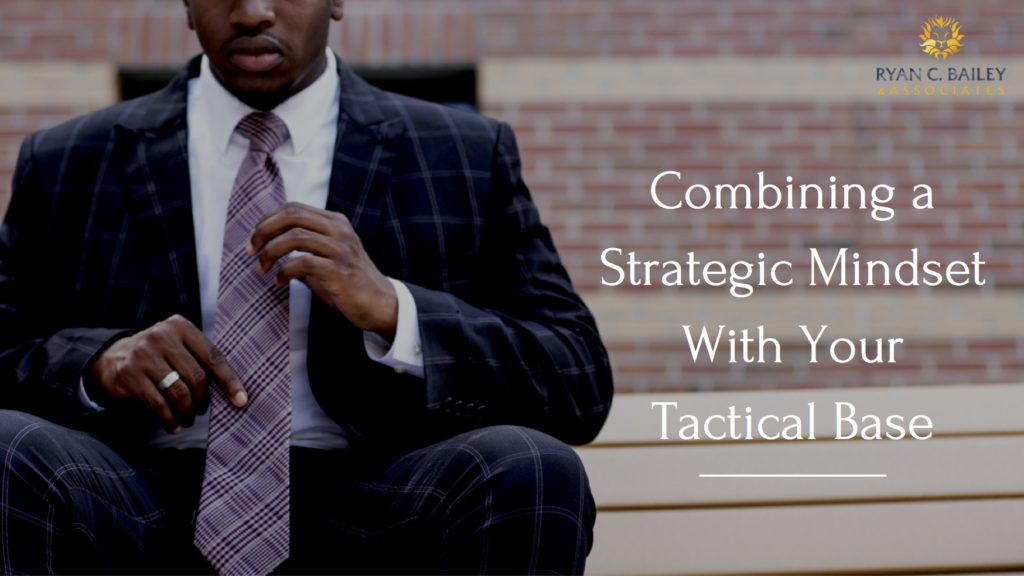 A few weeks ago, we discussed the marks of a master tactician. A tactician is project-oriented, fast-moving and responsible for the implementation of day-to-day tasks. We then dove into the marks of a master strategist. A master strategist values taking time to think, processing through the long-term impact of decisions while considering the views of others. But any leader needs to be able to combine a strategic mindset with a tactical base. This is a necessary skill if one wants to ascend to the Vice President role and above in a large company. If you are running a smaller business, you already know that you need both strategy and good tactical skills in order to succeed.
A few weeks ago, we discussed the marks of a master tactician. A tactician is project-oriented, fast-moving and responsible for the implementation of day-to-day tasks. We then dove into the marks of a master strategist. A master strategist values taking time to think, processing through the long-term impact of decisions while considering the views of others. But any leader needs to be able to combine a strategic mindset with a tactical base. This is a necessary skill if one wants to ascend to the Vice President role and above in a large company. If you are running a smaller business, you already know that you need both strategy and good tactical skills in order to succeed.
Here are ways to merge a strategic mindset with your tactical base:
1. Must develop a keen sense and drive for strategy and execution.
To advance, you must develop a keen sense and drive for both strategy and execution. It is not enough to merely see a need; you must have the skills and capability to carry that need out. One cannot exist without the other. Both must be nurtured, grown, and improved upon.
2. Know how to develop a strategic plan that encompasses your keen sense and drive for execution.
A strategic plan that doesn’t keep in mind how it will be executed is just a dream (See Marks of a Master Tactician for more details on the elements you will need to remember). While thinking long-term is crucial, it is important to be able to craft tangible, short-term objectives to move towards the overarching goal. A goal becomes muddied without specific steps to get there. Moreover, craft the plan to the strengths of the individuals who will be executing. This will increase the likelihood of success.
3. Understand what competitors are up to and relay important competitor info up the chain as quickly as possible.
Part of the above plan will include understanding your competitors' strengths and weaknesses and how to position your company best in light of that knowledge.
4. Get buy-in from so many different parties.
Before executing a strategic plan, it is important to gain buy-in from other departments and teams. This buy-in could prove invaluable as you will probably need their help from time to time and they could also notice any blind spots in the plan that will help you to refine it. As an aside, getting buy-in from different parties also helps to diffuse accountability.
5. Making sure that each person executing is clear on their role, the decisions they can make and what they are responsible for.
Sometimes you can come up with a brilliant strategic plan but if your team is not clear on their roles, what decisions they can make and what they will be accountable for that can lead to things being dropped and poor execution. This must be clear before the project starts.
6. Don’t second-guess plan once you start to execute.
Once all of the above is accomplished and you start to execute it, it is important that you don’t second-guess the plan. This doesn’t mean that you won’t make some course-corrections as you receive feedback (see below) but it does mean that the overall direction won’t drastically change. The larger your company is, the harder it will be to make a dramatic change.
7. Must assess the initial feedback after executing the strategy and make course-corrections on the fly.
As feedback comes in, you will start to spot trends, make subtle changes, and improve the tactics. However, the overall strategy should not change that much. The course-corrections typically are about the tactics not the strategy.
8. Review, Refine, Review, Refine.
Continually review the strategic plan and refine it as you go. It will help to sharpen the next strategic plan that you develop.
Chew On This:
- How can you integrate both strategy and tactics to optimize your effectiveness in your role?
Ryan C. Bailey is President and CEO of a company that equips business leaders to develop the teams that everyone wants to work for.
*This blog is an amalgamation of a few different clients. No one single client is being singled out.

